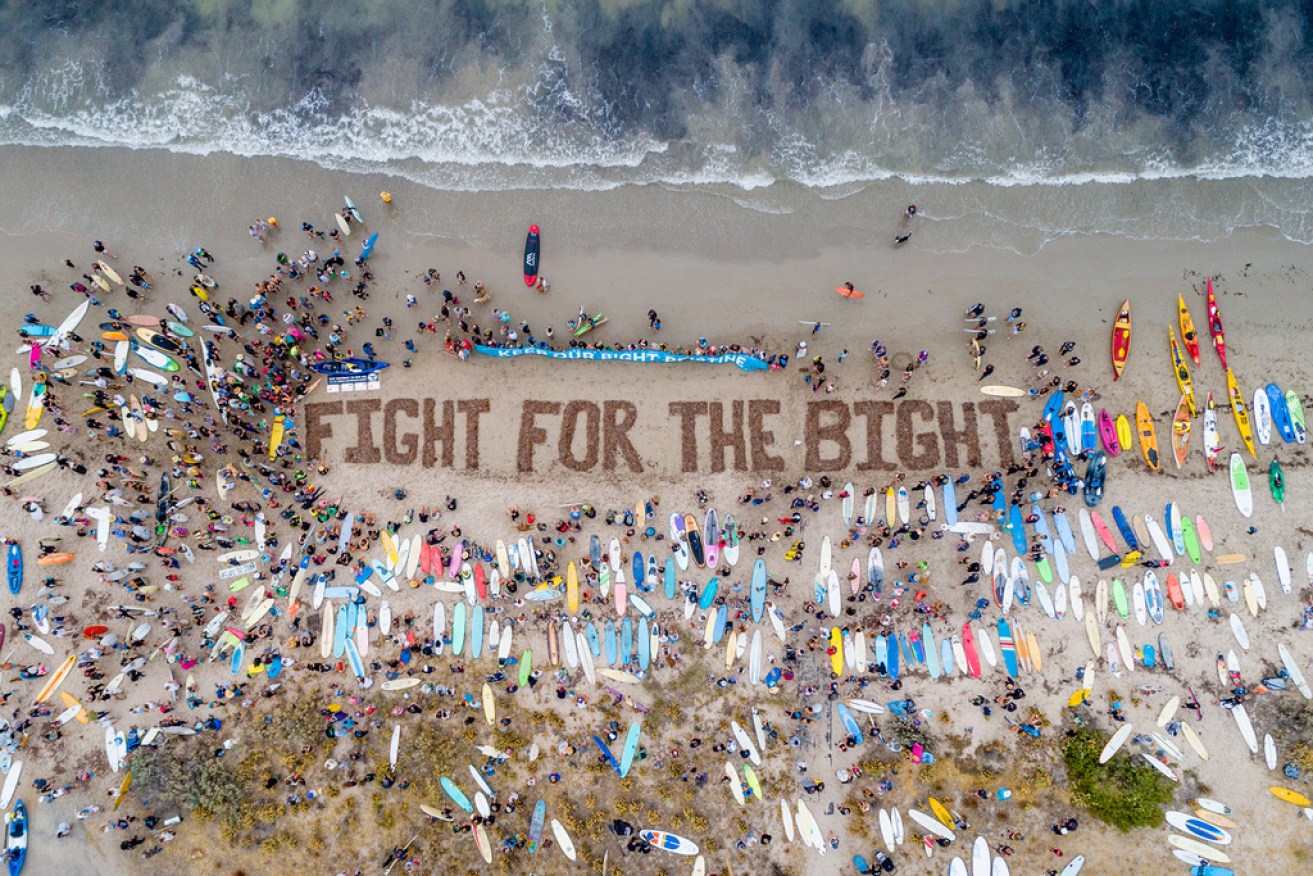Drilling the Great Australian Bight: Government says ‘no way’ Equinor – for now


Fight for the Bight protestors have gathered at beaches across Australia. Photo: Che Chorley
The safety authority governing the offshore petroleum industry has knocked back a Norwegian oil giant’s plans to drill in the Great Australian Bight.
Protesters are celebrating the decision as a significant win in the battle to ‘Fight for the Bight’, however the federal government has confirmed the door remains open to oil company Equinor to go ahead with its plan.
On Thursday the National Offshore Petroleum Safety and Environmental Management Authority (NOPSEMA) confirmed it was seeking to “clarify matters raised in the plan” put forward by the state-owned Norwegian company, adding there were concerns over “information gaps”.
The authority would not provide details on which aspects of the drilling proposal had raised concerns. The company has two months to submit an updated plan.

Surfers have been leading protests at beaches across Australia.
It comes after Equinor attracted fierce opposition from small coastal groups and local councils, to billionaires Richard Branson and Andrew Forrest, as well as Australian sports stars and musicians.
Much of the concern was centred around the company’s disaster-mitigation strategy, which showed oil could spread across the south coast of the mainland and around Tasmania if the company’s plan goes awry.

Equinor modelling showing planning for how an oil spill could spread. Photo: Equinor
Last month, a panel convened by the University of Sydney warned the government about the risks of the ‘overconfident’ oil plan and called on the federal government to hold the oil company to higher standards.
The submission was co-authored by University of Sydney energy and natural resources law expert Dr Madeline Taylor, along with Emeritus Professor Andrew Hopkins (Australian National University), Greg Bourne (Australian Climate Council and former president of BP Australia), and Professor Tina Soliman-Hunter (Aberdeen University Centre for Energy Law).
Protesters have been gathering regularly at beaches across the country in a campaign backed by some of the greatest names in world surfing.
Mick Fanning, Layne Beachley, Steph Gilmore and Sally Fitzgibbons have thrown their weight behind the campaign, as has the World Surf League and Australian musicians such as Silverchair’s Daniel Johns.
- Learn more on the Bight issues by reading TND‘s report here
- Read about NOPSEMA’s timeline of the assessment here
Mass demonstrations have seen thousands of protesters paddle out to sea in separate events across Victoria, South Australia, New South Wales and Western Australia.
Equinor is confident the chances of a spill are extremely low, maintaining its exploratory drilling could uncover resources and eventually create more than 1000 jobs.

Protesters converge on Adelaide’s Rundle Mall to denounce Equinor’s plans to drill in the Great Australian Bight.
Noah Schultz-Byard, SA projects manager for think tank The Australia Institute, said BP and Chevron had already been “sent packing”.
“Now the other companies lining up to exploit the Bight should take the message and move on,” Mr Schultz-Byard said.
“Our research has found that the majority of people in South Australia and across the country do not want to see the Great Australian Bight opened up to drilling.
“Drilling in the Bight is risky from both an environmental and economic perspective, putting thousands of jobs across South Australia and Tasmania at risk.”
In a statement, NOPSEMA said: “The assessment will now pause and recommence when Equinor submits the additional information. Equinor has been provided with 60 days to submit the requested information to NOPSEMA.
“The request for information was made in order to clarify matters raised in the plan and to address information gaps identified by NOPSEMA’s specialist team assessing the plan.
“Under Australia’s objective-based regulatory regime, a request for further information is a normal step in the assessment process.”
Mr Schultz-Byard called on the government to enshrine protection of the Bight in legislation.
“The Australian Parliament should now get on with legislating to protect the Great Australian Bight and begin the process of applying for the area to be designated a UNESCO World Heritage Site,” he said.
“Doing so would boost tourism in South Australia and protect the fisheries and aquaculture industries that so many regional communities rely on.”








